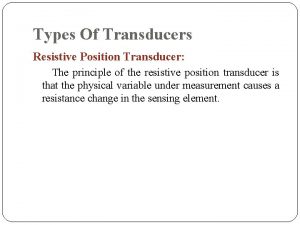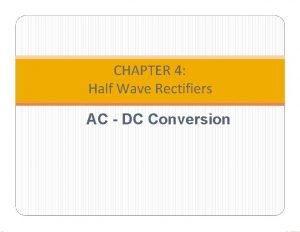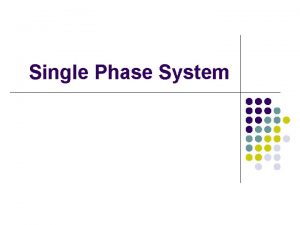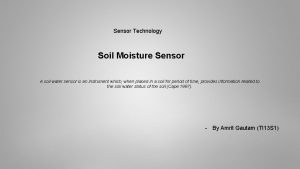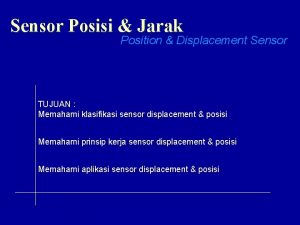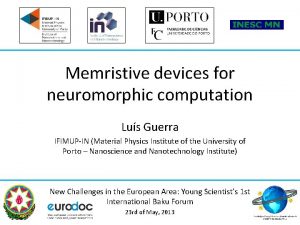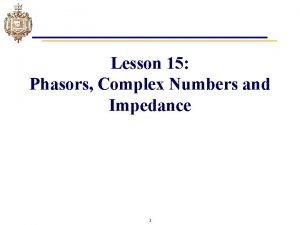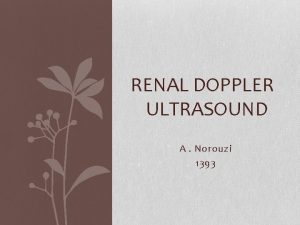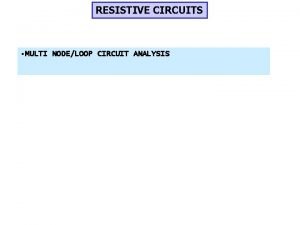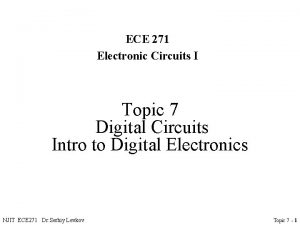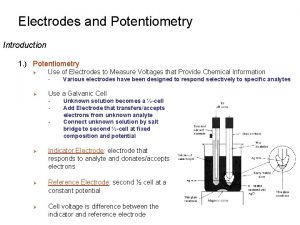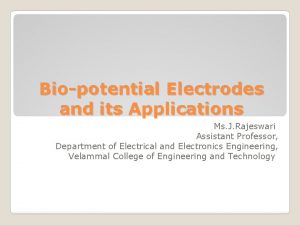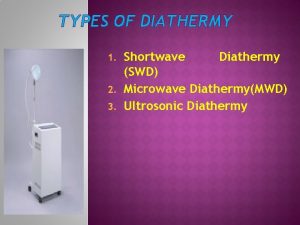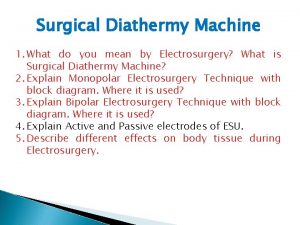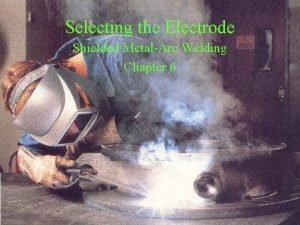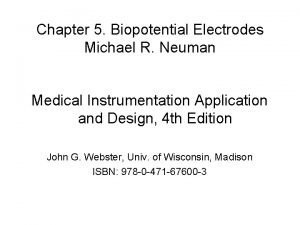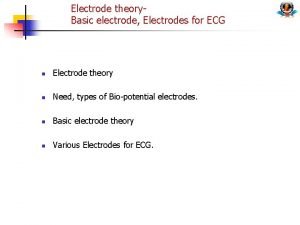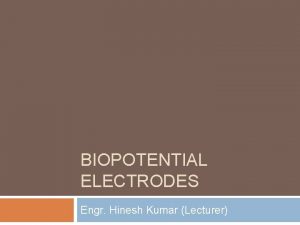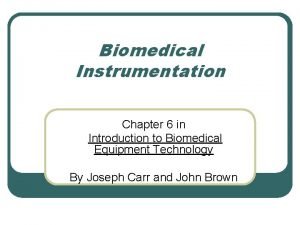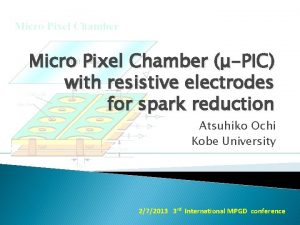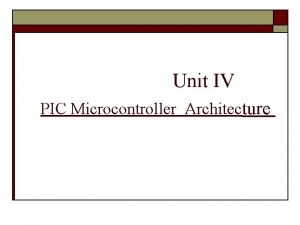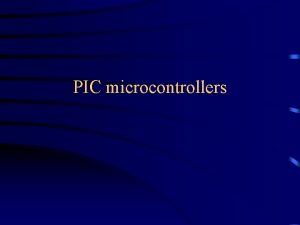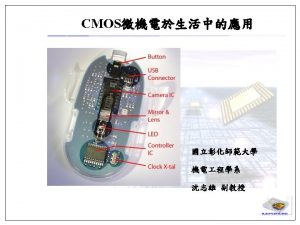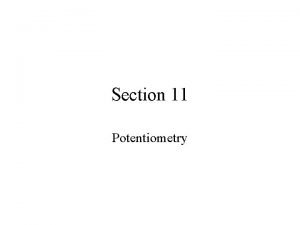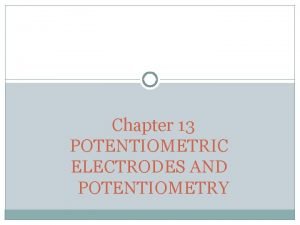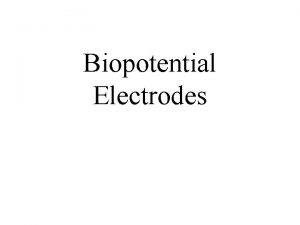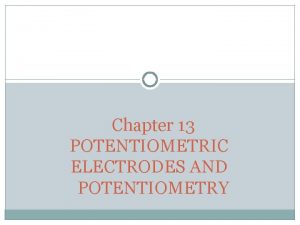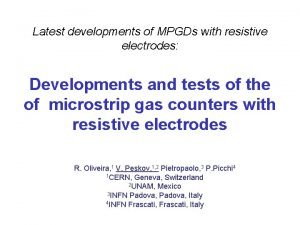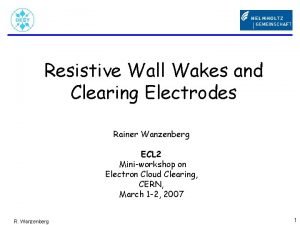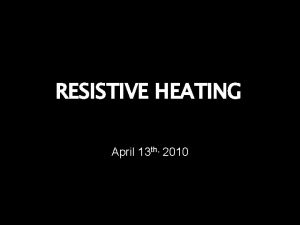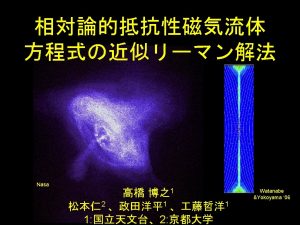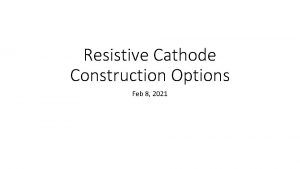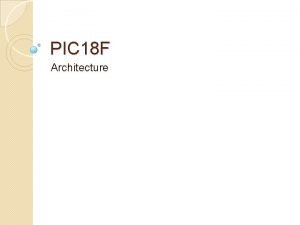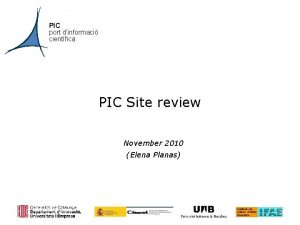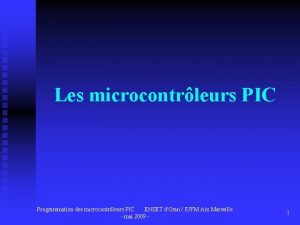Development of PIC with resistive electrodes using sputtered

























- Slides: 25

Development of μ-PIC with resistive electrodes using sputtered carbon Kobe Univ. , Tokyo ICEPPA F. Yamane, A. Ochi, Y. Homma S. Yamauchi, N. Nagasaka, H. Hasegawa, T. Kawamoto. A, Y. Kataoka. A, T. Masubuchi. A, 15/10/2015 p p p Outline Introduction New resistive material Pixel alignment Gain measurement Summery and further prospects MPGD 2015@Trieste 1

ü Introduction p New resistive material p Pixel alignment p Gain measurement p Summery and further prospects 15/10/2015 MPGD 2015@Trieste 2

Micro Pixel Chamber: μ-PIC • 2 D gaseous imaging detector produced by PCB technology. • For many purpose. . . Dark Matter Search(NEWAGE) K. Nakamura PTEP (2015) 043 F 01 Talked by T. Ikeda(15/10) ETCC(Electron-Tracking Compton Camera) T. Tanimori+ The Astrophysical Journal 810 (2015) Talked by T. Takemura(14/10) and more application… 15/10/2015 Mascot of NEWAGE "Daakumatan" A. Ochi+ NIM A 471 (2001) 264 Space Dosimeter(PS-TEPC) Y. Kishimoto NIM A 732 (2013) 591 MPGD 2015@Trieste Neutron Imaging J. D. Parker+ NIM A 697 (2013) 23 3

Our purpose l Stable operation in high rate HIPs(Highly Ionizing Particles) environment ->μ-PIC needs to have spark tolerant l In this research Ø We propose μ-PIC for ATLAS forward muon detector. Ø Sputtered carbon is used as resistive cathodes for spark protection. Ø The production improvement and fundamental measurement of resistive μ-PIC are reported. 15/10/2015 MPGD 2015@Trieste 4

Physics motivation l Muon Tagger • ATLAS new endcap forward muon detector considered to be installed nearby the beam line (2. 7<|η|<4. 0 ) after the long shutdown from 2023. l Very hard environment for detectors • Multiple track are incident in very small area. • High rate HIPs background ~100 k. Hz/cm 2. • Detector size is limited (<5 cm thickness). l Requirements for Muon Tagger Ø Granularity of ~100 um for track separation. Ø Stable operation with high gain in high rate HIPs. Ø Thickness<5 cm 15/10/2015 MPGD 2015@Trieste 5

Why μ-PIC ? l Properties Ø Good position resolution(2 D) & high rate capability. • Isolated pixels are arranged by 400 um pitch with 250 um diameter hole. • Each pixel has an anode pin and a surrounding cathode. • 2 D readout by orthogonal anode/cathode strips without the loss of signals. Ø μ-PIC has no floating structures (wire, foil, mesh…). • Made by PCB/FPC technology. • Large detector(30 cm) can be produced. • Larger area available by arranging many μ-PIC to tile form. (It is possible because there is no flowing structure) l μ-PIC with resistive electrodes was developed for spark protection. (Next slide) 15/10/2015 MPGD 2015@Trieste 10~ 30 cm μ-PIC μ-PIC μ-PIC 6

μ-PIC with resistive cathode l Resistive cathodes for reducing sparks • Strong spark reduction was shown at high gain(>10000) operation under irradiation of the fast neutron(a few Me. V). • Spark rate was 104 times less than normal μ-PIC Spark rate = Spark counts / Number of neutron l Capacitive readout without AC coupling • Pickup electrodes are lying under resistive cathodes and insulator(polyimide). • Charges are induced from resistive cathodes. • This capacitive readout can be applied for anodes. • Detector construction can be simplified. 15/10/2015 MPGD 2015@Trieste 7

Requirements l Requirements Ø Granularity of ~100 um • The pixel pitch should be reduced (400 um->100 um). ->Resistive ccathodes are needed to be able to form precise pattern. Ø Stable operation • High resistivity: Strong tolerance for sparks but continuous voltage drop distort electric field • Low resistivity: Sparks cannot be reduced. • It is important that resistivity must not be too high and too low. ->Fine resistivity control is needed. Ø Detector size • No floating structure & capacitive readout -> Possible! l Previous resistive material: Carbon polyimide • Cathode surface is not flat so much. • Difficult to form more precise pattern. • Fine resistivity control is difficult. 300 um l Other resistive material is needed to achieve requirements. 15/10/2015 MPGD 2015@Trieste 8

p Introduction ü New resistive material p Pixel alignment p Gain measurement p Summery and further prospects 15/10/2015 MPGD 2015@Trieste 9

New material for resistive electrodes l Sputtered carbon has been developed and studied in Kobe Univ. (2013~). • Diamond like carbon is formed on the substrate • Very precise pattern can be formed easily with lift off process 3 D image of resistive μ-PIC Left: Carbon polyimide, Right: Sputtered carbon 300 um 15/10/2015 MPGD 2015@Trieste 10

Properties of the sputtered carbon ü Fine and uniform pattern. • Enough to achieve granularity of ~100 um. ü Wide range of resistivity control is available (50 kΩ/sq. ~3000 MΩ/sq. ). • Thickness control • Nitrogen doping ü Uniform resistivity. ü Strong attachment on substrate. ü Large size available (>2 m) Vacuum chamber (with Ar + N 2 gas) Be-Sputter Co. Ltd. (Kyoto Japan) Sample Rotating drum 4. 5 m round Sputtering target Surface Resistivity[MΩ/sq. ] 10000 A resistive strips foil for ATLAS NSW 15/10/2015 Resistivity vs thickness Pure C 1000 DLC 100 40 min. 10 N-DLC 3 hours 1 N 2 content in Ar is 3. 2% 0. 1 0. 01 100 MPGD 2015@Trieste 1000 Thickness [Ǻ] 10000 11

p Introduction p New resistive material ü Pixel alignment p Gain measurement p Summery and further prospects 15/10/2015 MPGD 2015@Trieste 12

Alignment problem l Anode pins are formed by 2 different processes on “Top substrate” and “Under substrate” (next slide). l Sometimes, there are misalignments of pixels. . . ->Anode pins contact to the inner pickup electrodes! l Alignment process should be improved! Top substrate Under substrate Misaligned under anode pin Top anode pin Misalignment of anode 15/10/2015 MPGD 2015@Trieste 13

Previous production method Manufactured by Raytech Inc. Cathode pattern Pickup electrode ① ② ③ ④ ⑤ Cathode pattern Top anode pin Pickup electrode 25 um Top substrate: Polyimide 25 um Cathode patterning using double side mask Cu plating on top surface Etching substrate Plating for anode pin 15/10/2015 MPGD 2015@Trieste 14

Previous production method Manufactured by Raytech Inc. Cathode pattern Pickup electrode Cathode pattern Top anode pin Pickup electrode 25 um ① ② ③ ④ ⑤ ⑥ Top substrate: Polyimide 25 um Cathode patterning using double side mask Cu plating on top surface Etching substrate Plating for anode pin Under substrate: Polyimide Because the surface is covered by Cu that will become anode strips, the anode pin of top surface cannot be seen… ⑦ Etching substrate and plating for anode pin -> Misalignment! 15/10/2015 MPGD 2015@Trieste 15

Improved production Manufactured by Raytech Inc. Cathode pattern Pickup electrode Cathode pattern Top anode pin Pickup electrode 25 um 75 um Dry resist ① Under substrate: Transparent dry resist 75 um ② Exposure 15/10/2015 MPGD 2015@Trieste 16

Improved production Manufactured by Raytech Inc. Cathode pattern Pickup electrode Dry resist ① ② ③ ④ ⑤ Cathode pattern Top anode pin Pickup electrode 25 um 75 um Cu sputtering for anode connection Under substrate: Transparent dry resist 75 um Exposure Developing Cu sputtering for anode connection Ni plating 15/10/2015 MPGD 2015@Trieste 17

Improved production Cathode: Sputtered carbon Pickup electrode Top anode pin Pickup electrode 25 um 75 um ① ② ③ ④ ⑤ Under substrate: Transparent dry resist 75 um Photo etching for anode pin. Cu sputtering for anode connection Ni plating Carbon sputtering with lift off 15/10/2015 MPGD 2015@Trieste 18

μ-PIC(RC 33) Ø Ø Readout pitch: 400 um Active area: 10 cm× 10 cm, 256 strips Pixels are well aligned in all region. Carbon sputtered cathodes are well formed. 250 um 15/10/2015 MPGD 2015@Trieste 19

p Introduction p New resistive material p Pixel alignment ü Gain measurement p Summery and further prospects 15/10/2015 MPGD 2015@Trieste 20

Gain curve l Gas gain measurement using 55 Fe source • Gas mixture: Ar: C 2 H 6 = 90: 10 • Drift field: 2 k. V/cm • Cathode HV: -500 V ~ -700 V • Anode: Ground 999999 • Readout: Cathode pickup electrode • Preamp: ASD ü Gain of more than 10000 was achieved. ü There were no discharges. Gain curve Gain FWHM: 19% 999999 l However, there are some problems… • Signals cannot be read by Anode. • Gaseous amplification was not observed in Anode HV & Cathode ground operation (conventional way). • Compared to previous detector, - Operation HV is higher than about 100 V. - Gain increases slowly with HV value. • Something is wrong! 15/10/2015 RC 33 -1 RC 33 -3 400 450 500 550 600 HV [-V] 650 700 750 Anode signals cannot be seen MPGD 2015@Trieste Cathode signal Gain of old μ-PIC with carbon polyimide 21

The cause of problems l Disconnection between anode pins and anode strips. • It is thought that anode connection by Cu sputtering was incomplete because under substrate was thick (75 um). Cathode –HV & Anode Ground operation only available. l Gain reduction was seen because of charge up on anode pins. Gain variation Electrons remain on anode pin 0 -HV 10000 Gain -HV 1000 100 450 500 550 Within 10 min after source on 15/10/2015 MPGD 2015@Trieste 600 650 HV [-V] 700 750 800 More than 2 hours after source on 22 850

p Introduction p New resistive material p Production p Gain measurement ü Summery and further prospects 15/10/2015 MPGD 2015@Trieste 23

Summary and further prospects l Summary ü μ-PIC with resistive cathode using sputtered carbon is developed. ü Thanks to production improvement, pixels were well aligned in all active region(10 cm× 10 cm). ü Gain of more than 10000 was achieved with no discharge. (Ar: C 2 H 6=90: 10) ü Connection between the anode strip and the anode pin is incomplete. l Further prospects ü ü ü Anode connection should be improved (now producing). Spark torrent test of carbon sputtered μ-PIC (3/2016). E-field simulation. Reducing pixel pitch. 400 um -> 200 um True 2 D readout with SRS system. 15/10/2015 MPGD 2015@Trieste 24

Thank you! 15/10/2015 MPGD 2015@Trieste 25
 Concentrated sulfuric acid electrolysis
Concentrated sulfuric acid electrolysis Resistive position transducer
Resistive position transducer Uncontrolled rectifier example
Uncontrolled rectifier example Power factor of pure resistive circuit is
Power factor of pure resistive circuit is Resistive soil moisture sensor working principle
Resistive soil moisture sensor working principle Resistive displacement sensor
Resistive displacement sensor Isokinetic exercises definition
Isokinetic exercises definition Static power dissipation in nmos inverter
Static power dissipation in nmos inverter Resistive switching
Resistive switching Purely resistive circuit
Purely resistive circuit Pulsus tardus
Pulsus tardus Resistive circuit analysis
Resistive circuit analysis Nmos inverter with resistive load
Nmos inverter with resistive load Fast fill electrodes
Fast fill electrodes Potentiometry introduction
Potentiometry introduction Types of defibrillator electrodes
Types of defibrillator electrodes Biopotential electrodes
Biopotential electrodes Faradaic vs non-faradaic
Faradaic vs non-faradaic Swd frequency wavelength
Swd frequency wavelength Diathermy machine
Diathermy machine Flat position welding
Flat position welding Biopotential electrodes lecture notes
Biopotential electrodes lecture notes Floating electrodes for ecg
Floating electrodes for ecg What is hittorf method
What is hittorf method Floating electrodes for ecg
Floating electrodes for ecg Biomedical sensors examples
Biomedical sensors examples

